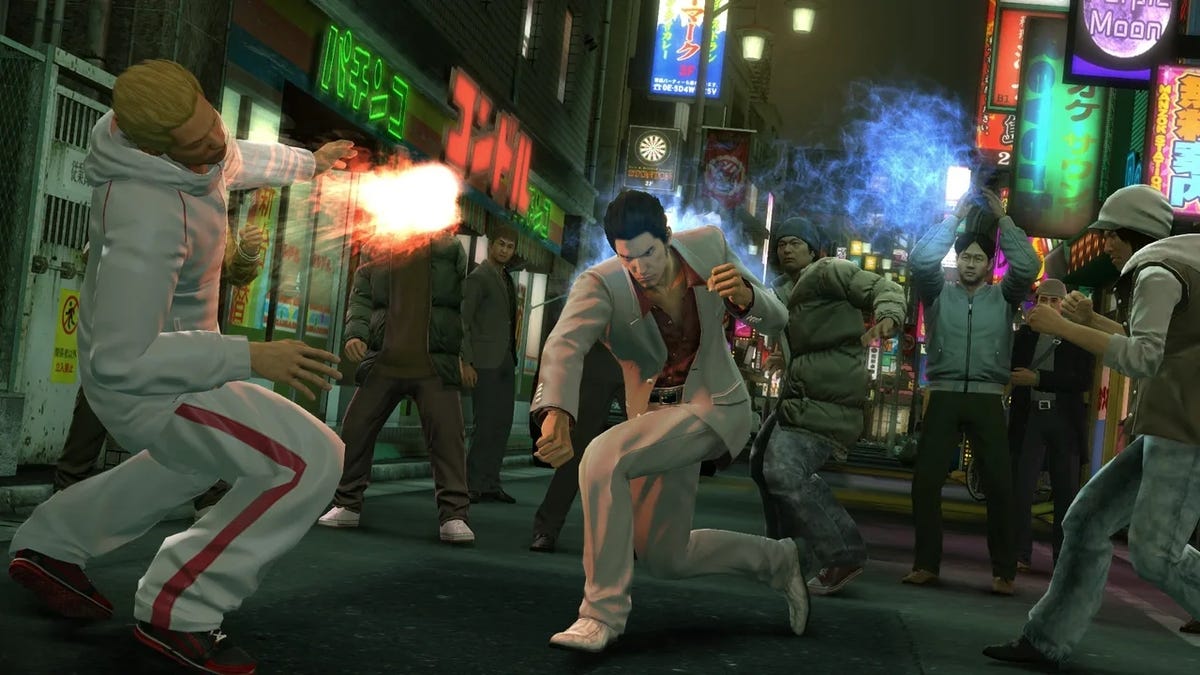Following its stellar adaptation of Fallout earlier this year, Amazon’s eyes are now set on translating the popular video game series Like a Dragon (formerly known as Yakuza) this fall. Ahead of the release of Amazon’s adaptation, which straddles the line with the title Like a Dragon: Yakuza, lead actor Ryoma Takeuchi—portraying none other than the Dragon of Dojima, Kazuma Kiryu—has discussed some of the ways in which he and the show will honor the series while charting their own paths.
In a recent IGN interview, Takeuchi revealed that the series would not entirely adapt the games, which largely follow the life and times of Kiryu, a Yakuza who struggles with his place in the criminal organization and in life. Though he refrains from giving away exactly how the two will differ, Takeuchi does claim that the show is partly an original story, though it does appear as if it’ll mostly adapt the larger points of the established narrative. For those wondering about the authenticity of it all, he states, “The game developers at Sega told me the show is faithful to the games and that my performance was faithful to Kiryu, so that’s enough for me!”
Speaking of, Takeuchi seems to be taking some liberties with the character of Kazuma Kiryu. Kiryu has, over the many years, become a beloved and storied character. His life is one of the most vividly realized spans of a character’s being in all of video games. That’s an imposing legacy to live up to, and while Takeuchi definitely wants to honor it as best he can, he also wants to take this opportunity to steer Kiryu—whom he describes as a”strong, well-built, heroic character” that is “starved for love”—with a different vision.
“I have great respect for the feelings of the fans, but when I play a character, I have to express them in my own way, so I can’t pay attention to the preconceptions of others…There’s no point in trying to surpass the original game; rather I wanted to show respect to the games while making something new as an artist.”
Despite that, Takeuchi is fully embodying Kiryu, and that includes doing his own fight scenes, as well as developing his fighting style. Takeuchi seemingly found inspiration from the games and began by honing Kiryu’s approach to combat after his time in prison, where he’s sent for ten years in the first Like a Dragon game. From there, he appears to have worked backwards to make something that’ll presumably look and feel sloppier and less disciplined. He claims, “When the story starts in 1995, Kiryu’s fighting style is still rough and not very effective, because he has not formally learned martial arts and he is just using his instincts.”
From that point on, he will grow as a fighter, which will be evident when the show jumps forward to 2005. The first Like a Dragon game follows Kiryu during two distinct periods of his life, first in the 90s and then after his release from a decade-long stint in prison in 2005, so it’s only natural that he should come across as a different combatant and person depending on the era. To that extent, Takeuchi will also look and sound different depending on the time certain scenes take place. In the 90s, he mentions playing Kiryu with the “kind of energy you only get on the verge of your twenties,” before then “subtract[ing]” those youthful emotions when we touch base with him in 2005.
The most tantalizing aspect of the show, though, is how it will portray Kamurocho, the fictional district that the games take place in, which takes influence from Kabukicho, an actual red-light district in Japan. Kamurocho is a deeply realized setting, filled with both oddballs as well as recurring figures in Kiryu’s life that have followed him through the decades. Kamurocho also changes extensively throughout the course of the series, which comes as no surprise considering the games span just about 50 years.
According to Takeuchi, the show, which filmed on sets rather than on-location, a lot of attention seems to have been paid to the place and its people. “Kamurocho in 1995 is a lively, warm, sparkling place filled with energy,” whereas 2005’s version of the district is much moodier and “the atmosphere is colder” to reflect the passing of laws criminalizing Kiryu’s way of life, shifts in attitude and culture, and how he feels “out of step with the people around him.”
Throughout these changes, Like A Dragon: Yakuza’s director Masaharu Take seems to have captured “the flavor of Kamurocho” by being as detailed as Ryu Ga Gotoku Studios, the developers of the games. Takeuchi says that one of those details was the casting of background actors that really brought the setting to life. “The set was so detailed,” he said, “from each passerby to every corner of its streets, that I felt like I had traveled back in time. It didn’t feel like a set at all. Yes, there is some CG enhancement, but I think it was the people who really brought it to life. You can’t fake that.”
It seems to me that the people involved in this show get what has made the Like a Dragon series so deeply beloved over the years. It’s always had cinematic qualities that’ll likely translate wonderfully to a TV adaptation, but the games’ deep sense of place, and your ability to reach out and feel it all as Kiryu, has also played a tremendous part in the franchise’s ascent. Moreover, Kiryu is a complicated character in an evolving world, and a show feels like an apt way to adapt that story. Everything that Takeuchi has said leads me to believe that this team knows what it’s doing with this property, and I’m now positively buzzing for this series.

